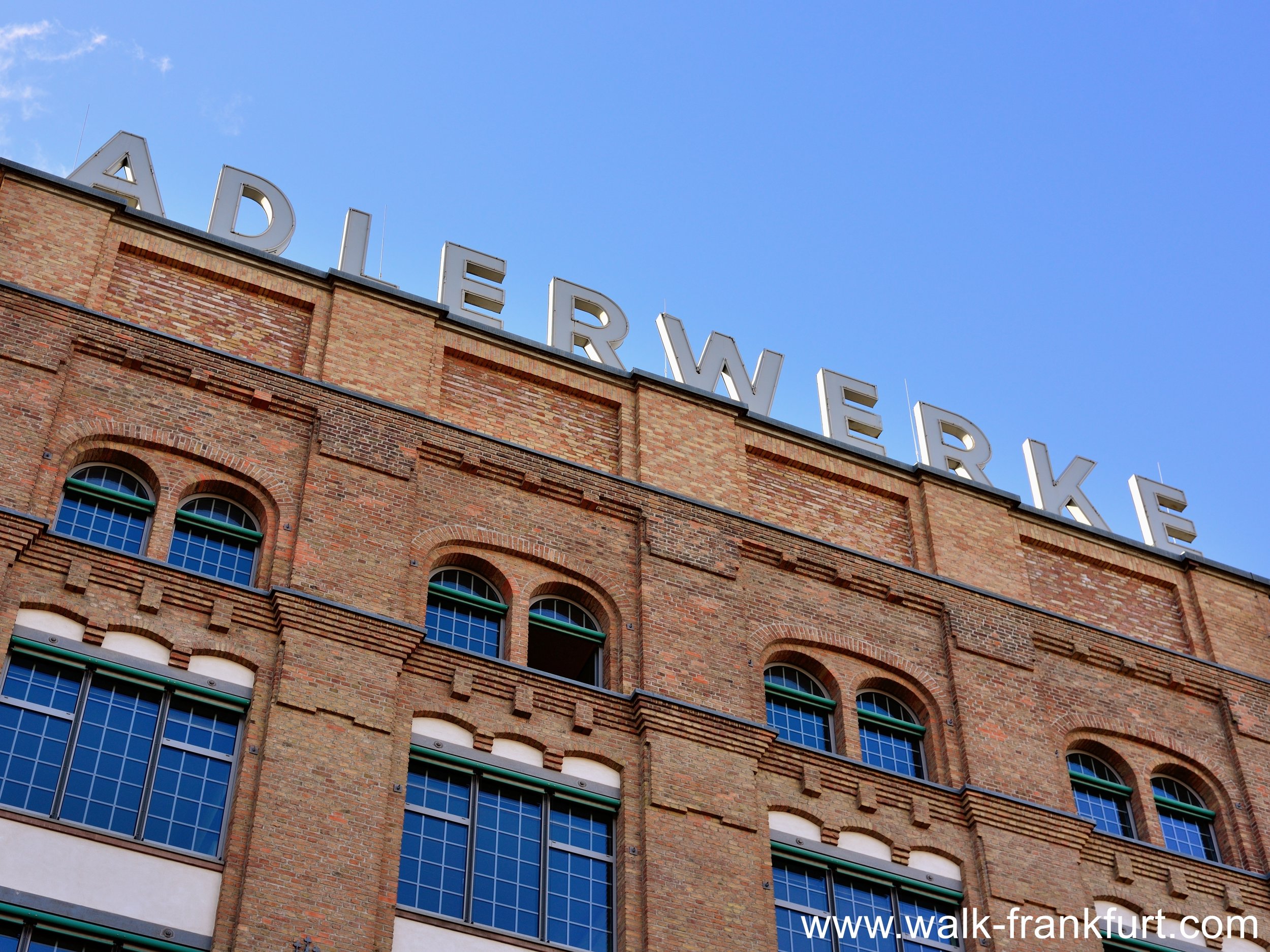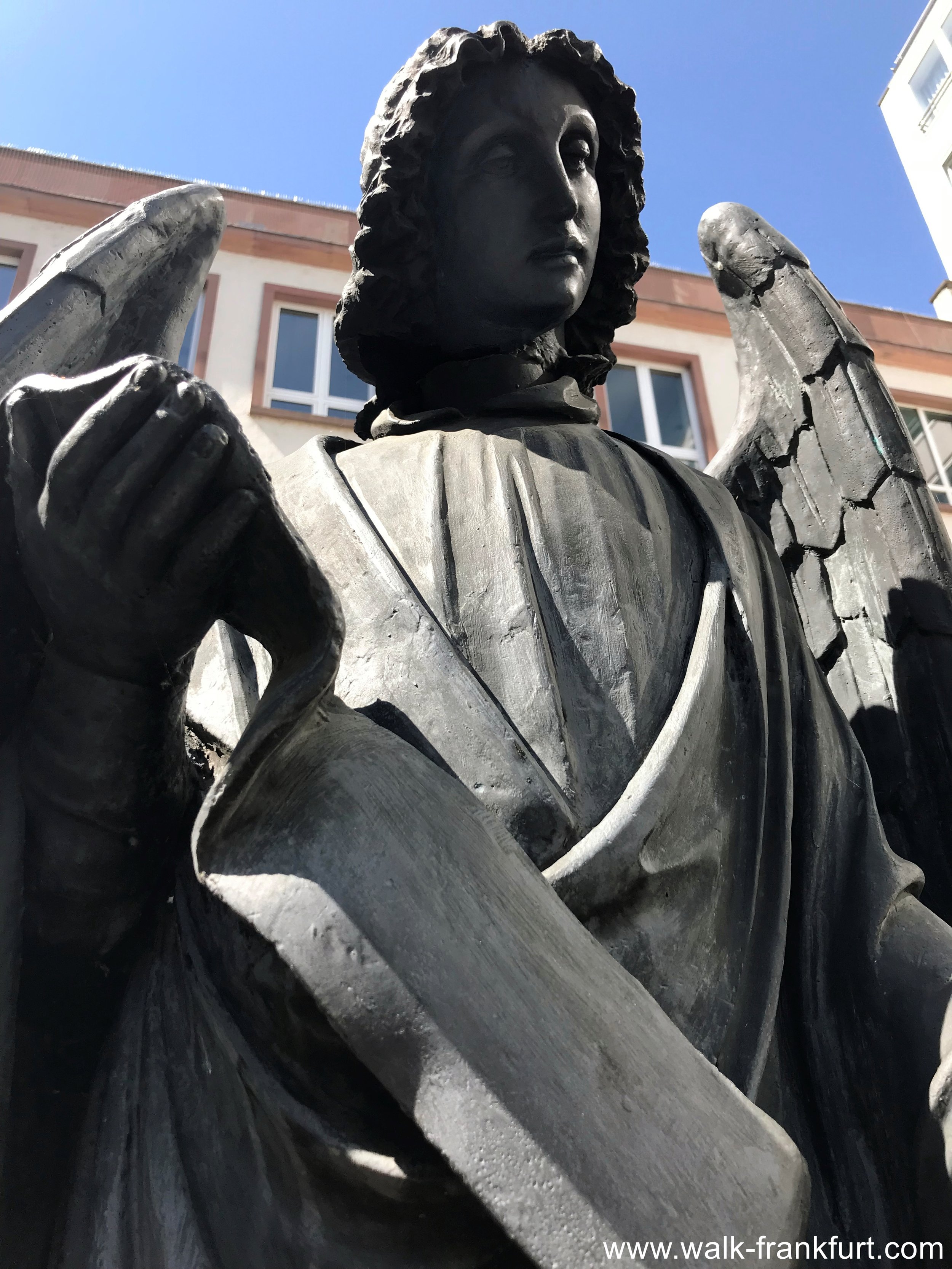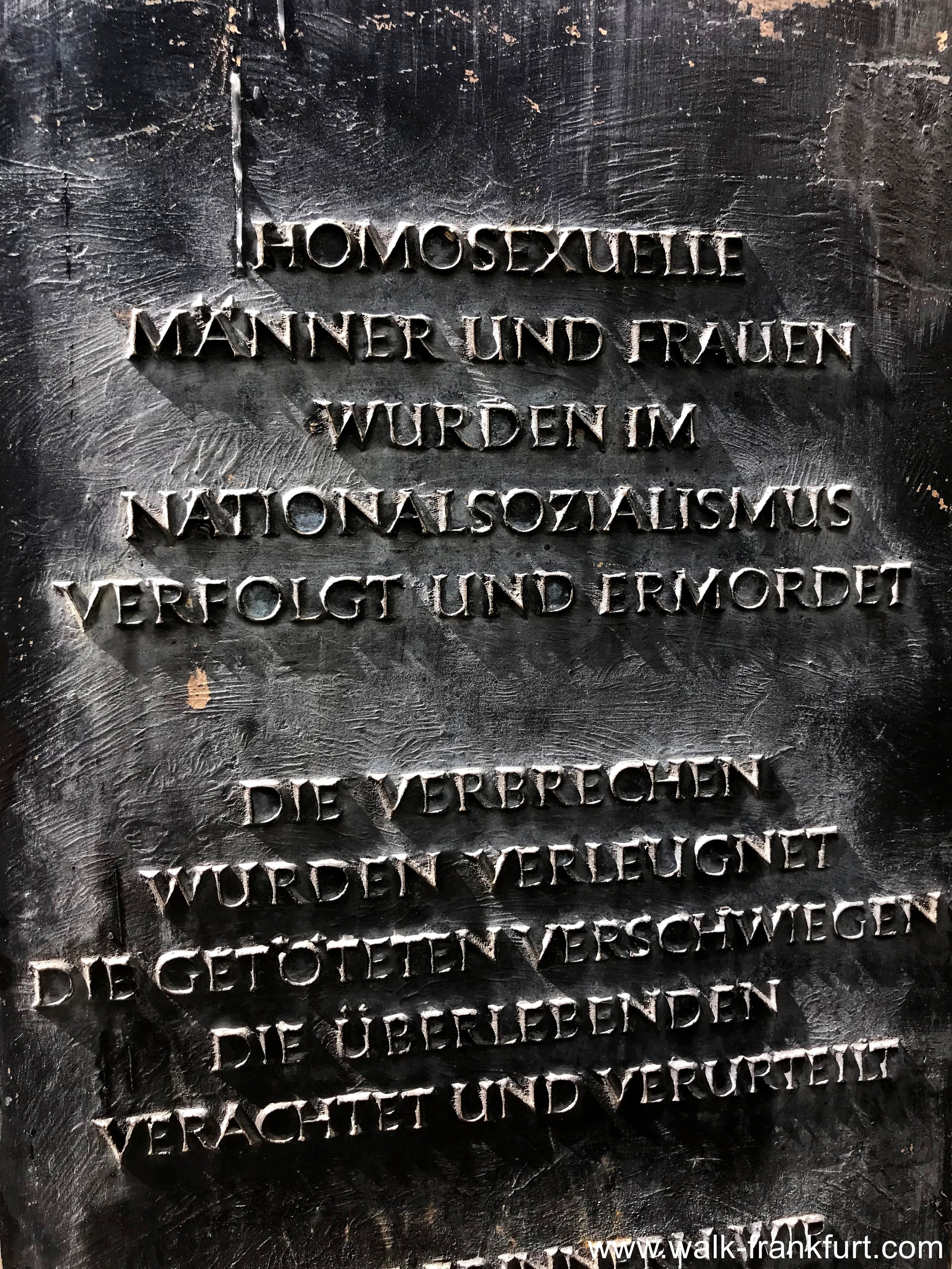International Holocaust Remembrance Day - January 27th
Eleven million victims
"By 1945, Germany had murdered over eleven million people in Europe: political prisoners, Roma, homosexuals, the disabled but in numerical terms, overwhelmingly - around six million - Jews." (MacGregor, 2014, p509)
I hope Neil MacGregor doesn't mind me opening a blog page with a quote from his excellent book, Germany: Memories of a Nation.
During my work as a tour guide the majority of people I meet, from all over the World, earnestly believe that 6 million people where murdered during the holocaust. It shocks them to discover the number was closer to 11 million and that there were other groups who were actively victimised with the ultimate aim of annihilation. Frankfurt commemorates all. Memorials have been erected by the local council, by artists, companies, societies and by families of the victims, which exist around the streets of the city and exhibits are regularly put on public display as timely reminders.
Stolperstein - Stumbling stones
By simply looking down on the ground you will sooner or later stumble upon a stumbling stone. Stumbling stones are an art initiative by Gunter Demnig, "...that commemorates the victims of National Socialism, keeping alive the memory of all Jews, Roma and Sinti, homosexuals, dissidents and Jehovah's Witnesses and victims of euthanasia who were deported and exterminated." The commemorative brass stones are placed in the ground outside the last chosen residence of the victim with the opening words, "Here lived...", followed by a short narrative of the victim's fate. Frankfurt has it's share of the 61,000 stumbling stones which can be found across Germany, Austria, Hungary, the Netherlands, Belgium, the Czech Republic, Norway and Ukraine.
Katharina Schmid's stumbling Stone (Stolperstein) murdered for being a Jehovah's Witness.
Adlerwerke "Katzbach" - the concentration camp in Frankfurt
During World War Two a concentration camp existed the centre of Frankfurt, KZ-Katzbach at the Adlerwerke. Up to 1,600 victims were worked to death and by March 1945, as the defeat of the Nazis became a reality, the workers who had survived the atrocious working conditions were sent on a death march to Buchenwald and thereafter onto Dachau. Amongst them were Polish people arrested after the Warsaw uprising and German objectors to the National Socialist government. On the Adlerwerke building today hangs a memorial plaque to those victims so they are not forgotten. More information about the camp, albeit in German, can be found on the official KZ-Alderwerke website.
Roma memorial
On Braubachstrasse, hanging on the wall by number 20, is a memorial dedicated to the Roma people of Frankfurt who fell victim to the racial policies of the Nazis. It's a simple memorial but, nevertheless, it is there detailing the murder and sterilisation of the Roma. Last summer I also had the privilege to meet a man tending a grave in the Frankfurt cemetery. As I paused to look he called me over and explained the grave, he was so lovingly caring for, was that of his grandmother, a Roma, incarcerated at a concentration camp and who had survived the holocaust.
The Grey Buses
Another poignant memorial is that to the physically and mentally disabled victims of the holocaust. The image of a grey bus symbolises the collection and deportation of disabled people, deemed unworthy by the National Socialists, to one of six killing centres in Germany. One of these killing centres was located 80km north of Frankfurt, in Hadamar. The organised euthanasia program, named Action T4, systematically murdered 70,000 people. However, it is believed institutions practised localised euthanasia and, in total, between 1939 and 1945 approximately 300,000 mentally and physically disabled people were murdered. The Grey Buses exhibitwas temporarily located in Frankfurt on Rathenauplatz/Goetheplatz in 2018.
The Frankfurter Engel
In 1994, the Frankfurter Engel was the first memorial in Germany to commemorate the persecution of homosexuals during the National socialist era. Men were targetted in greater numbers than women. Many were worked to death, others were forcibly experimented upon in order to find a "cure" for their condition. The Frankfurter Engel - the Frankfurter Angel, stands on the corner of Schäfergasse and Alte Gasse.
Jewish memorial at Neue Börneplatz
Since 1996 Neue Börneplatz, Frankfurt has been a dedicated memorial to the Jewish citizens who were murdered during the holocaust. The area was formerly the site of the Jewish market and the Börneplatz synagogue which was razed to the ground during Kristallnacht (11th November 1938). The wall around the old Jewish cemetery, also at this site, displays 11,915 steel plaques which individually name each and every Jewish citizen of Frankfurt who was exterminated.
Further out of the city centre are other Jewish memorials. The most recent is the at the European Central Bank (ECB). Part of the building structure makes use of a former warehouse which used as a collection point from where the local Jewish people were forced to board trains and deported to their deaths. The signal box and railway lines outside the building, on public land, have been left as a reminder of the deportations. Within the ECB building a stark concrete ramp leads to the basement of the building, the former the collection point, with inscriptions from the victims and observers.
Details of the other Jewish memorials can be found using this link to Jewish Sites in Frankfurt.













